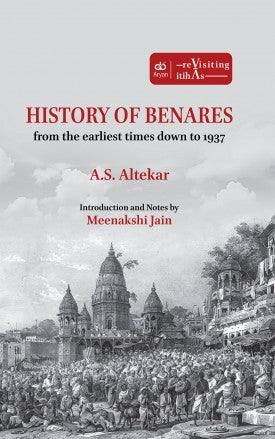HISTORY OF BENARES: From the Earliest Times Down to 1937
HISTORY OF BENARES: From the Earliest Times Down to 1937 is backordered and will ship as soon as it is back in stock.
Couldn't load pickup availability
Genuine Products Guarantee
Genuine Products Guarantee
We guarantee 100% genuine products, and if proven otherwise, we will compensate you with 10 times the product's cost.
Delivery and Shipping
Delivery and Shipping
Products are generally ready for dispatch within 1 day and typically reach you in 3 to 5 days.
- Type: English
- Pages: 136
- Format: Hard Bound
- ISBN: 9788173057182
- Edition: 1st Edition
- Publisher: Aryan Books International
- Size: 15 cm x 23 cm
- Product Year: 2025
History of Benares (from the earliest times down to 1937) is a remarkable work on the sacred city of Kashi/Banaras. Kashi was first mentioned in the Atharva Veda. The Skand Purana detailed Shiva's arrival in the city and his pledge to “never forsake” it. Along with Videha, Kashi acquired early fame as a centre of Upanishadic discourse. Kashi experienced its first Muslim attack in 1033 CE. Thereafter it suffered repeated assaults. The net result was that Banaras of the Puranic mahatmyas was completely obliterated.
Professor Altekar has provided a valuable account of the Vishvanath temple built by Narayana Bhatta/Todar Mal in 1585. He asserts that it was built on the site of an earlier 14th-15th-century temple, that was pulled down, probably on the directions of Sikandar Lodi. Aurangzeb's order for the demolition of the Vishvanath temple was recorded by Saqi Mustaid Khan, in his Maasir-i-Alamgiri. In 1777 CE, Ahilya Bai Holkar of Indore built the present Vishvanath temple on a plot of land about fifty feet square.
In the concluding section of his book, Professor Altekar highlights the contribution of the Rajas of Banaras in a remarkable revival of Hindu traditions. No less commendable was the initiative of Pandit Madan Mohan Malviya in establishing the Benares Hindu University.
The Introduction and Notes at the end of each chapter have been written by Meenakshi Jain, which further adds value to this work. Some illustrations have also been added to enhance the visual appeal of the book.





